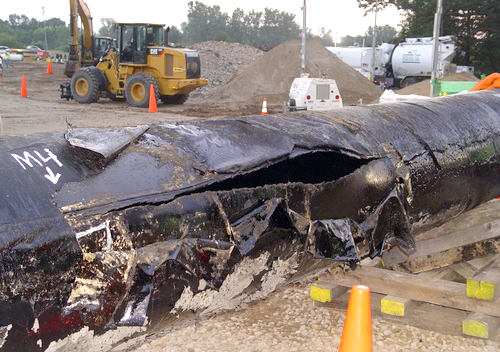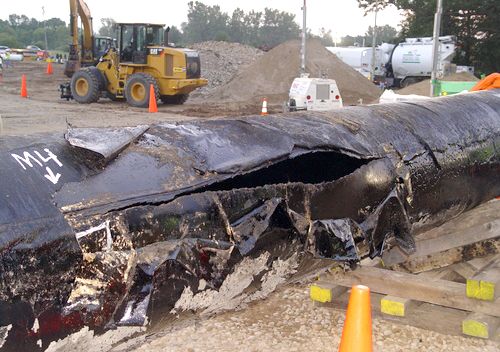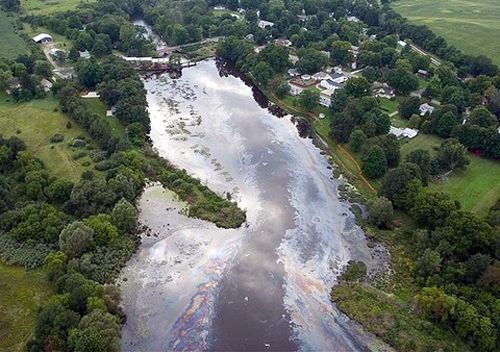

Thanks to News Channel 5’s investigator Sarah Buduson for interviewing me regarding the proposed 250-mile Nexus Gas transmission pipeline from Northeast Ohio to Canada. The pipeline would transport Utica shale gas from fields in eastern Ohio to customers in Ohio, Michigan and Ontario, Canada with possible plans of an expansion once operations begin in November 2015. The $1.2 to $1.5 billion pipeline announced this week would accelerate fracking throughout Ohio and threaten the long-term sustainability of the economy, human health and the environment.
The three companies that signed an agreement to develop the new transmission line include Spectra Energy Corp., Enbridge, Inc. of Canada and Detroit-based DTE Energy. We don’t have to look far to learn about Enbridge’s safety record. July 25 was the two-year anniversary of Michigan’s Kalamazoo disaster, when an estimated 1.1 million gallons of raw tar sands crude oil burst from a pipeline into a creek that feeds the Kalamazoo River.

The oil spread quickly in the flooded river, coating wildlife, saturating marshlands, backyards, businesses and farmland. The raw tar sands oil disaster was caused by a break in a pipeline owned by Enbridge, which knew of safety problems with the pipeline for years before the disaster.
Enbridge is involved in many controversial pipeline projects including the Northern Gateway pipeline that will build a dual pipeline from the tar sands to the B.C. coast carrying heavy bitumen 1,200 kilometres one way and Middle Eastern condensate the other way across close to 1,000 streams and rivers. There is a revolutionary movement fighting this tar sands pipeline as British Columbians are thinking twice before allowing this pipeline to run through their backyards.
Spectra Energy Corp. is also involved in many controversial projects including a planned natural gas pipeline that is charted to run across land belonging to Chevron’s subsidiary, Texaco. The 16-mile long pipeline is slated to bring fracked gas from New Jersey, across Texaco’s property in Bayonne, under the Hudson River and into the West Village in Manhattan.

I have grave concern regarding this project. Northern Ohioans need to educate themselves on this issue and get involved. Not only will this pipeline significantly accelerate fracking in Ohio, increasing groundwater contamination and air pollution, but it will increase the number of fracking wastewater injection wells and the amount of toxic fraking wastewater that needs to be disposed of with no proper disposal method available. We’ll certainly need more cities in Ohio like Cincinnati, which has lead the way by banning fracking injection wells in their community.
The Nexus Gas transmission pipeline will have to be approved by the Federal Energy Regulatory Commission before next steps can be taken. Stay tuned to EcoWatch.org as we’ll continue to cover this story.
Visit EcoWatch’s FRACKING page for more related news on this topic.

 233k
233k  41k
41k  Subscribe
Subscribe 